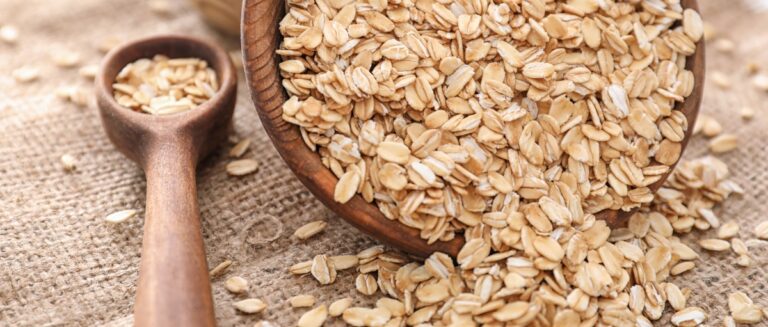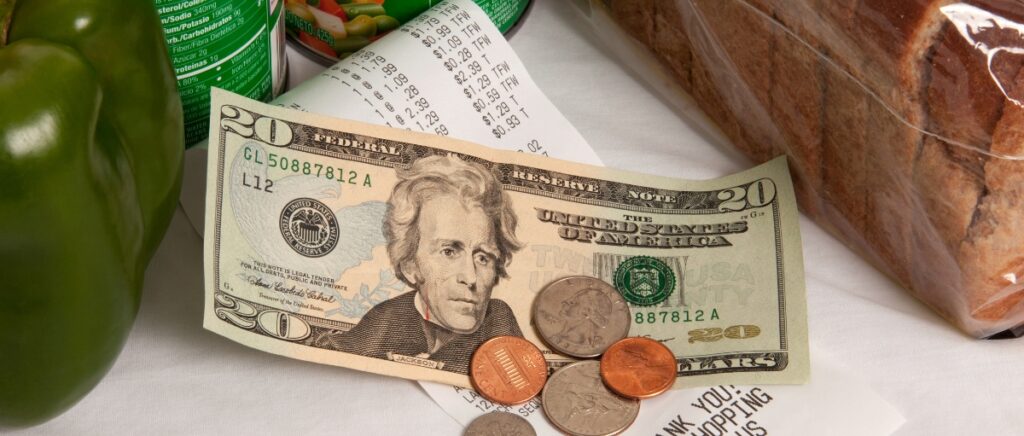Did you know that over 5 million seniors faced hunger in 2021 due to their inability to afford enough nutritious food? With grocery prices rising faster than fixed incomes, many older adults find it increasingly difficult to maintain a healthy diet, which is essential for managing chronic health conditions and preserving independence.
But there may be help hiding in plain sight. If you have a Medicare Advantage plan, you might be eligible for a grocery allowance benefit that could provide $25-200 monthly to spend on approved healthy foods.
The catch? Most people have never heard of it.
In this article, we will uncover this little-known benefit. You will learn what the Medicare grocery allowance is, how it works, who qualifies, and most importantly, how to find out if you could be eligible to receive it. Get ready to take notes and stock your fridge with the good stuff. Let’s dive in!
What Exactly Is the Medicare Grocery Allowance?
The Medicare grocery allowance is an extra benefit that gives you money specifically to buy healthy food. If you qualify, you’ll get a special card pre-loaded with funds—usually $25 to $200 monthly. You can use this card at participating grocery stores or retailers to purchase approved food items that support your nutrition and health.
Please remember that the grocery allowance is not a standard component of Original Medicare (Part A and B). Instead, it is an extra benefit that specific Medicare Advantage plans (Part C) may offer. These plans, offered by private insurers, combine your Part A and B coverage with additional perks such as dental, vision, and, sometimes, funds for groceries.
Why do they offer this benefit? The goal is to help seniors, especially those with chronic conditions, afford healthy food to manage their health.
So, if you have a Medicare Advantage plan, you might have extra grocery money headed your way each month. But how do you get and use those funds? Let’s break that down next.
How the Medicare Grocery Allowance Works
So you’re enrolled in a Medicare Advantage plan—how do you know if you have the grocery benefit, and how do you use it? Here’s what you need to know.
Getting Your Grocery Allowance
If your plan offers a grocery benefit, you will receive a special debit card in the mail. It may be a separate card, or the funds might be loaded onto a “flex card” along with other benefits like an allowance for over-the-counter medicine.
Your specific plan determines the amount you receive, but typically, the range is $25 to $200 monthly. Medicare usually loads these funds onto your food allowance card at the beginning of each month or quarter.
One key thing to note: The grocery allowance generally stays the same. You’ll lose the extra if you don’t use the total amount in the given period. So it’s a “use it or lose it” situation—but that just means more motivation to stock up on the healthy foods you love!
Using Your Medicare Grocery Allowance
When you head to the store, bring your grocery allowance card. You can only use the card at participating retailers, including major grocery chains. Some plans may also let you shop online and deliver healthy food right to your door!
At checkout, swipe your card like any other debit or credit card. The system will deduct the amount of your purchase from your balance. Just make sure you’re only buying approved items (more on that next)!
Pro tip: It’s a good idea to save your receipts if your plan has questions about your purchases later. You can track your balance and see your approved retailer list by logging into your plan’s member portal or app.
What Can You Buy with Your Medicare Grocery Allowance?
Here’s the fun part—shopping! But first, knowing what your grocery allowance covers is important before you load up your cart.
What are the approved Healthy Food Items?
The grocery allowance is meant to help you buy healthy, whole-food items but may vary by plan.
- Fresh and frozen fruits and veggies.
- Lean proteins like chicken, fish, beans, and tofu.
- Whole grains like brown rice, whole wheat bread, and oatmeal.
- Low-fat dairy products like milk, yogurt, and cheese.
- Heart-healthy oils, nuts, and seeds.
- Spices and seasonings to flavor your healthy meals.
Some plans may also cover nutrition shakes, protein bars, and other supplemental items. Those specialty health foods might also be on the approved list if you’re a green juice or acai bowls fan!
What’s Not Included
While the grocery allowance is pretty generous, some items aren’t typically covered:
- Alcohol and tobacco products.
- Hot prepared foods or restaurant meals.
- Vitamins and supplements (unless specifically included in your plan).
- Non-food items like paper goods, personal care products, or pet food.
Using a flex card with an over-the-counter allowance, you can use those non-grocery funds for toothpaste or bandaids. However, the grocery money is dedicated to groceries.
When in doubt, check your plan’s approved item list or call them before you shop. And if you accidentally buy something that’s not covered, you’ll just need to pay for that item separately with another method.
Who’s Eligible for the Medicare Grocery Benefit?
Now that you know how great the grocery benefit is, you probably wonder if you qualify.
The answer: it depends.
Having a Medicare Advantage Plan
The first requirement is to enroll in a Medicare Advantage plan that offers the grocery benefit.
There has been a rapid increase in enrollment for Medical Advantage Plans in recent years.
Eligible beneficiaries increased to 47% (27.6 million enrollees) in 2021.
While that’s a good chunk of plans, most still do not offer grocery money. Grocery benefits are most common in Special Needs Plans for people who receive both Medicare and Medicaid (called Dual-Eligible SNPs) and in plans for people with chronic illnesses like diabetes or heart disease (called Chronic Condition SNPs).
Meeting Health Criteria
Even if you have a plan that offers the benefit, you may need to meet specific health criteria to qualify. This varies by plan, but common requirements include:
- Having a chronic condition like diabetes, heart disease, high blood pressure, kidney disease, or depression.
- Being assessed as having a high risk of complications or hospitalization.
- Participating in a healthcare management program with your plan.
The plans want to target the grocery benefit to the people who need it most from a health standpoint. If you’re relatively healthy, you may not qualify even if your plan offers it to others.
Other Requirements
On top of the plan and health criteria, grocery benefits may have other requirements like:
- Being enrolled in the plan for a certain length of time.
- Living in the plan’s service area.
- Not having another source of food assistance like SNAP or Meals on Wheels.
The bottom line is eligibility is very plan-specific. The best way to find out if you qualify is to call your plan directly and ask. They can look at your situation and let you know.
Finding a Medicare Plan with Grocery Benefits
If you want to receive grocery money each month but your current plan doesn’t offer it, you may wonder how to find one that does. The good news is that insurance companies add this benefit more often each year as they recognize how much it can help their members stay healthy.
When to Look
You can switch to a new Medicare Advantage plan during the Annual Enrollment Period, which runs from October 15th to December 7th each year. If you qualify for a Special Enrollment Period due to a move or loss of coverage, you may also be able to switch at other times of the year.
Tools and Resources
To compare plans offer and which one provides grocery benefits in your area, you can:
- Visit the Medicare Plan Finder tool at medicare.gov/plan-compare.
- Call 1-800-MEDICARE (1-800-633-4227) to speak with a representative.
- Contact your local State Health Insurance Assistance Program (SHIP) for free, unbiased guidance.
- Work with a licensed Medicare insurance broker who can help you compare plans.
When looking at plans, check for the grocery benefit and that the plan meets your other health needs. Look at factors like:
- Which of your doctors and pharmacies are in-network
- Your estimated total costs for premiums, deductibles, and copays
- Remember to check if the plan’s formulary covers your prescription drugs.
- What other supplemental benefits are included, like dental, vision, or fitness
The grocery benefit is a great perk, but it shouldn’t be the only reason you choose a particular plan. Make sure the whole package works for you and your budget.
Is the Grocery Benefit Right for You?
If you find a plan offering a grocery allowance and qualify based on your health needs, it can be a fantastic way to make eating healthy easier on your wallet. For many seniors, an extra $50 or $100 a month for nutritious food can make a huge difference in sticking to the diet that keeps them feeling their best.
But there are a few potential drawbacks to keep in mind:
- Limited plan options: Depending on your location, there may only be a few Medicare Advantage plans that offer the grocery benefit—and they may not be the best fit for you in terms of cost, provider networks, or drug coverage.
- Restrictive spending: While it’s great to have money earmarked for healthy food, you can’t use the grocery allowance for other expenses you may have, like utilities or medical supplies. If you’d rather have more flexibility in your budget, a plan with a lower premium or a general “flex spending” benefit may make more sense.
- Needs to be clarified: Navigating what items are approved and which stores you can shop at can be tricky. If you accidentally buy something that’s not covered, you’ll be on the hook to pay for it another way.
The grocery benefit is an excellent option if it meets your needs, but it’s not suitable for everyone. Take the time to compare all the available Medicare Advantage carefully plans and weigh the pros and cons based on your unique situation.
Other Ways to Save on Groceries and Get Nutritious Meals
Other resources are available if you don’t qualify for a Medicare grocery allowance or need additional help on top of what your plan provides. Here are a few to check out:
- SNAP (Supplemental Nutrition Assistance Program): Formerly known as food stamps, SNAP provides monthly funds for groceries to low-income seniors. Contact your local Department of Social Services office to determine if you qualify based on your income and assets and to apply.
- Meals on Wheels delivers prepared meals to homebound seniors who can’t shop or cook for themselves. Providers usually offer meals on a sliding scale based on income. Visit mealsonwheelsamerica.org to find a program near you.
- Senior food banks and commodity boxes: Many local food banks and pantries have special programs for seniors, like reserved hours, delivery options, or pre-assembled boxes of staple items. Feeding America has a search tool on their website (feedingamerica.org) to help you find food assistance near you.
- Farmer’s market vouchers: Some states offer vouchers for low-income seniors to use at participating farmer’s markets so that they can stock up on fresh local produce. Contact your local Area Agency on Aging to see if this program is available where you live.
Remember, there’s no shame in getting a little help to ensure you can eat well. These programs exist because good nutrition is essential for older adults to stay healthy and independent.
Little Extras, Big Impact: Making the Most of Your Medicare Benefits
We’ve covered a lot of ground in this guide to the Medicare grocery allowance—from what it is and how it works to who qualifies and how to find a plan that offers it. But the big takeaway is this:
Small benefits can make a massive difference in helping seniors afford nutritious food to thrive.
An extra $50 or $100 monthly may seem like little in the grand scheme. But for an older adult on a tight budget, it could mean enjoying fresh fruits and veggies, whole grain bread, or lean proteins instead of relying on cheap processed foods. It could give them the freedom to prepare the meals they love, even if the ingredients are a little pricier. And it could provide priceless peace of mind that good food will be on the table, no matter what.
So, if you have a Medicare grocery benefit, use it—and savor every delicious, nutritious bite! If you don’t, consider looking into plans that offer it or tapping into other food assistance programs in your community. And spread the word to your friends and neighbors who may not know about these resources.
Together, we can ensure that every senior has access to the healthy fuel their body and mind need to make the most of their golden years. Here’s to happy, healthy eating!
Sources
Feeding America. (2023). The state of senior hunger in 2021. Feeding America. https://www.feedingamerica.org/sites/default/files/2023-04/State%20of%20Senior%20Hunger%20in%202021.pdf
Medicare. (n.d.). Understanding Medicare Advantage plans. Medicare. https://www.medicare.gov/publications/12026-Understanding-Medicare-Advantage-Plans.pdf
MedicareFAQ. (2023). Does Medicare offer a grocery allowance? MedicareFAQ. https://www.medicarefaq.com/blog/does-medicare-offer-a-grocery-allowance/#1
Medicare. (n.d.). Original Medicare (Part A and B) eligibility and enrollment. Medicare. https://www.medicare.gov/providers-services/original-medicare
Medicare. (n.d.). Parts of Medicare. Medicare. https://www.medicare.gov/basics/get-started-with-medicare/medicare-basics/parts-of-medicare
MedicareFAQ. (2023). Medicare Advantage SNP plans. MedicareFAQ. https://www.medicarefaq.com/medicare-part-c/medicare-advantage-plan-snp/
MedicareFAQ. (n.d.). Medicare flex card. MedicareFAQ. https://www.medicarefaq.com/blog/medicare-flex-card/
Assistant Secretary for Planning and Evaluation. (n.d.). Medicare Advantage: Overview. ASPE. https://aspe.hhs.gov/reports/medicare-advantage-overview
Medicare. (n.d.). Special Needs Plans (SNPs) coverage options. Medicare. https://www.medicare.gov/health-drug-plans/health-plans/your-coverage-options/SNP
Administration for Community Living. (n.d.). Area Agencies on Aging (AAA). Eldercare. https://eldercare.acl.gov/Public/About/Aging_Network/AAA.aspx
Food and Nutrition Service. (2024). SNAP eligibility. USDA. https://www.fns.usda.gov/snap/recipient/eligibility











